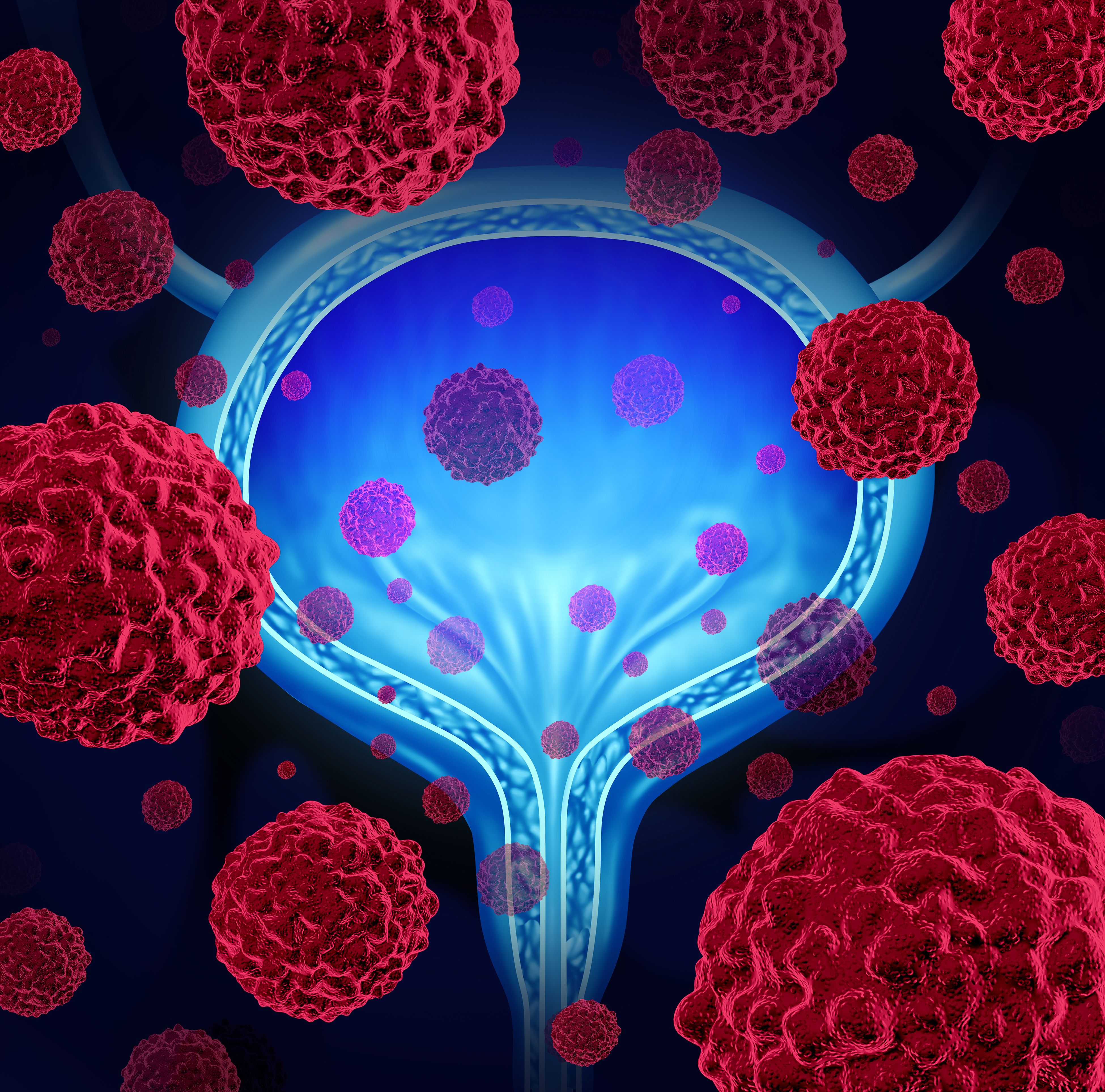UGN-102 May Be Nonsurgical Alternative to TURBT in Low-grade Bladder Cancer
UGN-102 elicited complete responses in 79.6% of patients with non–muscle-invasive bladder cancer at 3 months in the ENVISION trial.
UGN-102 elicited complete responses in 79.6% of patients with non–muscle-invasive bladder cancer at 3 months in the ENVISION trial.

UGN-102, a reverse-thermal gel-containing mitomycin, demonstrated efficacy and an acceptable safety profile as a minimally invasive, nonsurgical alternative to transurethral resection of bladder tumor (TURBT) in patients with recurrent, low-grade, intermediate-risk non–muscle-invasive bladder cancer (NMIBC), according to findings from the open-label, phase 3 ENVISION trial (NCT05243550) published in The Journal of Urology.1
Complete responses (CRs) were observed in 79.6% of patients (n=191/240; 95% CI, 73.9%-84.5%) at 3 months; Kaplan-Meier estimates for duration of response (DOR) at 15 months and 18 months following the 3-month CR were both 80.9% (95% CI, 73.9%-86.2%). At 12-months, the Kaplan-Meier estimate for DOR was 82.3% (95% CI, 75.9%-87.1%). At a median follow-up of 13.9 months, median DOR was not estimable (NE).
Additionally, CR was maintained by 146 patients at 15 months post-treatment initiation. The disease-free survival (DFS) Kaplan-Meier estimate at 15 months was 76% (95% CI, 69.7%-81.1%).
“These data from the ENVISION trial provide compelling evidence that treatment with UGN-102 achieves a clinically meaningful [CR] rate and also demonstrates remarkable durability in patients with [low-grade, intermediate-risk] NMIBC,” Sandip M. Prasad, MD, MPhil, director of Genitourinary Surgical Oncology at Morristown Medical Center/Atlantic Health System and principal investigator of the ENVISION trial, stated in a press release.2 “The long-term results, with 82.3% [DOR] at 12 months, further strengthen UGN-102’s potential as a non-surgical, effective treatment for patients [with] the recurrent and challenging nature of [low-grade, intermediate-risk] NMIBC.”
A total of 240 patients were enrolled in the trial, all of whom received at least 1 dose of UGN-102 and 95% (n= 228) of whom received all 6 weekly doses. UGN-102 was administered in intravesical instillations of 75 mg of mitomycin in an ambulatory setting as a primary chemoablative therapy.
Eligible patients had histologically confirmed low-grade NMIBC and at least 1 prior instance of low-grade NMIBC that required TURBT treatment.3 Additional criteria include intermediate-risk disease, adequate organ function, and anticipated life expectancy of at least the duration of the trial.
Patients were excluded if they had a history of high-grade bladder cancer, a known allergy or sensitivity to mitomycin, a current tumor grading of T1, evidence of urinary tract infection, and clinically significant urethral stricture that would preclude passage of a urethral catheter.
The trial’s primary end point was the CR rate at 3 months in all treated patients. Secondary end points included DOR in patients who achieved CR at 3 months; durable CR at 3 months; DFS at 3 months; and number of patients with treatment-emergent adverse events (TEAEs), serious TEAEs, and TEAEs of special interest.
Regarding safety, TEAEs of any grade were experienced by 57% of patients, grade 3 or higher TEAEs by 14%, treatment-related TEAEs by 34%, and serious TEAEs by 12%.1 The most common TEAEs were dysuria (23%), hematuria (8.3%), urinary tract infections (7.1%), pollakiuria (6.7%), fatigue (5.4%), and urinary retention (5.0%). The majority of TEAEs occurred in the first 3 months (39%).
TEAEs led to treatment discontinuation and study discontinuation in 2.9% and 2.5% of patients, respectively. A total of 3 patients died: 1 to pneumonia, 1 to cardiac failure, and 1 due to an unknown reason. All deaths were judged as unrelated to study treatment.
“These observations provide further evidence that UGN-102 may represent a well-tolerated and valuable alternative to TURBT for patients with recurrent [low-grade, intermediate-risk] NMIBC,” the study authors wrote.1
A new drug application for UGN-102 in patients with low-grade, intermediate-risk NMIBC was accepted in October 2024. The FDA has set a Prescription Drug User Fee Act date of June 13, 2025.4
References
- Prasad SM, Shishkov D, Mihaylov NV, et al. Primary chemoablation of recurrent low-grade intermediate-risk nonmuscle-invasive bladder cancer with UGN-102: a single-Arm, open-label, phase 3 trial (ENVISION). J Urol. 2025;213(2):205-216. doi:10.1097/JU.0000000000004296
- ENVISION trial results published in the February issue of The Journal of Urology highlight UGN-102 achievement of 82.3% duration of response at 12 months paving the way for the potential first FDA-approved treatment for LG-IR-NMIBC in June 2025. News release. UroGen. January 15, 2025. Accessed January 16, 2025. https://tinyurl.com/duvsh4w5
- A phase 3 single-arm study of UGN-102 for treatment of low-grade intermediate-risk non-muscle invasive bladder cancer (ENVISION). ClinicalTrials.gov. Updated November 4, 2024. Accessed January 16, 2025. https://tinyurl.com/r6wpd7bu
- UroGen announces FDA acceptance of its new drug application for UGN-102. News release. UroGen Pharmaceuticals. October 15, 2024. Accessed January 16, 2025. https://tinyurl.com/2ev5mk95